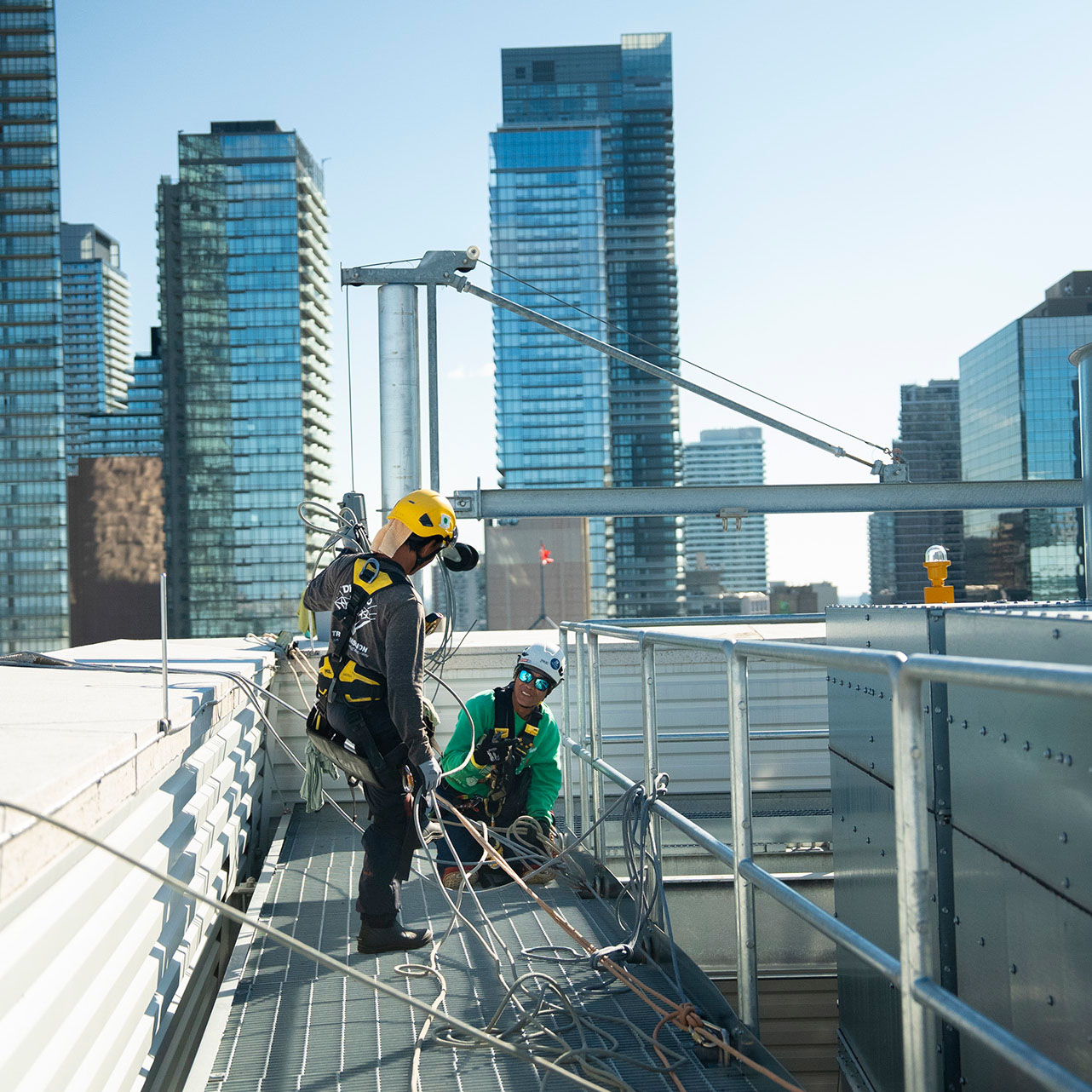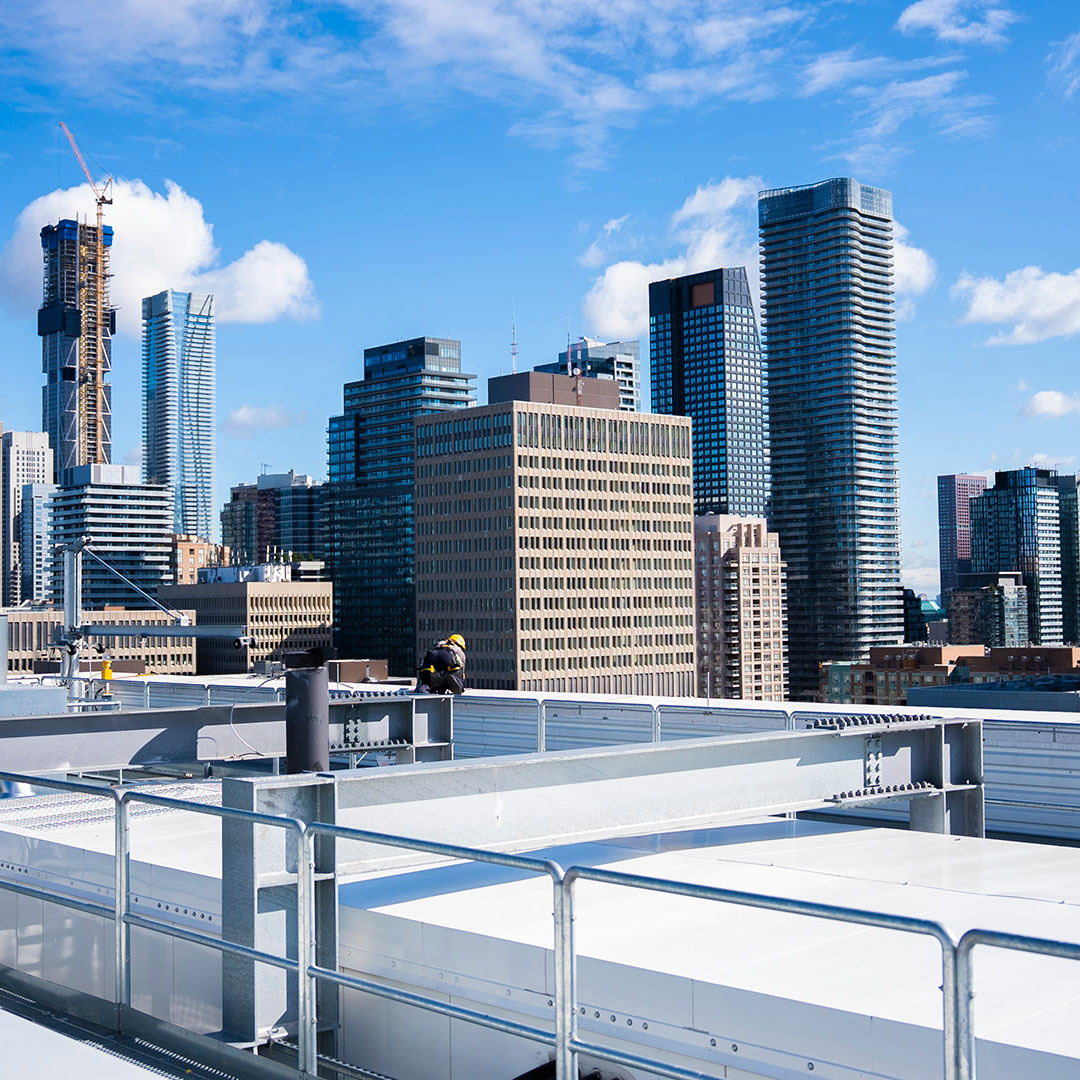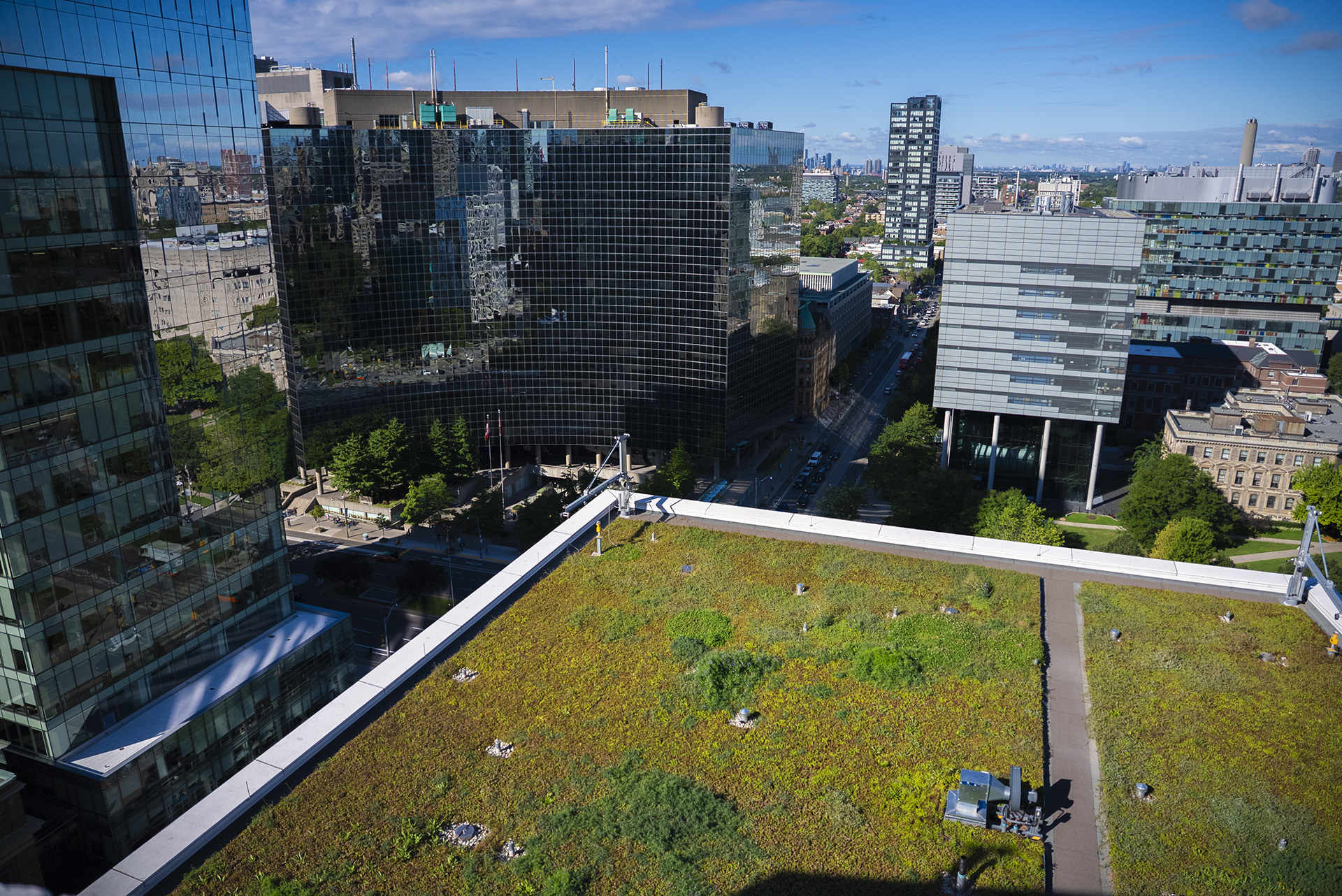Story by Laura Rosen Cohen
Photography by Nicole Njagi
The University of Toronto is ranked as the top university in Canada and among the top 20 universities in the world. But in addition to its academic and research standing, it has also taken a leadership role with respect to sustainability in higher education.
Many sustainability initiatives on campus can be seen during day-to-day interactions. Bottled water has been banned at the University since 2011 and water refill stations can be found across all three campuses. Our dining halls provide reusable, environmentally friendly food containers for take-out meals, and Oak House, the newest student residence on the St. George campus, was designed to be supported by a state-of-the-art geo-exchange heating/cooling system.
The University of Toronto is ranked as the top university in Canada and among the top 20 universities in the world. But in addition to its academic and research standing, it has also taken a leadership role with respect to sustainability in higher education.
Many sustainability initiatives on campus can be seen during day-to-day interactions. Bottled water has been banned at the University since 2011 and water refill stations can be found across all three campuses. Our dining halls provide reusable, environmentally friendly food containers for take-out meals, and Oak House, the newest student residence on the St. George campus, was designed to be supported by a state-of-the-art geo-exchange heating/cooling system.
There are many other sustainable spheres of action, but not all are visible. One such example is the spectacular green roof of the Schwartz Reisman Innovation Campus.
“The green roof is an area of the Schwartz Reisman Innovation Campus that most people will not see because of safety and access restrictions, but it is a sustainable feature of the building,” says Scott Hendershot, Senior Manager of U of T’s Sustainability Office, Facilities and Services. “The roof helps optimize our energy usage, save costs, and reduce our environmental impact. It directly aids the University of Toronto’s Climate Positive Action Plan.”

There are many other sustainable spheres of action, but not all are visible. One such example is the spectacular green roof of the Schwartz Reisman Innovation Campus.
“The green roof is an area of the Schwartz Reisman Innovation Campus that most people will not see because of safety and access restrictions, but it is a sustainable feature of the building,” says Scott Hendershot, Senior Manager of U of T’s Sustainability Office, Facilities and Services. “The roof helps optimize our energy usage, save costs, and reduce our environmental impact. It directly aids the University of Toronto’s Climate Positive Action Plan.”
What does that mean in practice?
Hendershot explains that the green roof helps reduce heating and cooling loads, reduces the ‘heat island’ effect and stormwater management. Most importantly, he adds, the building management and its biodiversity are completely aligned with campus sustainability goals. But the green roof is more than just an eco-friendly feature—it’s a powerful asset that benefits both the environment and the people who live and work on campus.
What does that mean in practice?
Hendershot explains that the green roof helps reduce heating and cooling loads, reduces the ‘heat island’ effect and stormwater management. Most importantly, he adds, the building management and its biodiversity are completely aligned with campus sustainability goals. But the green roof is more than just an eco-friendly feature—it’s a powerful asset that benefits both the environment and the people who live and work on campus.

There are over 700 active green roofs in the city of Toronto and several others on U of T buildings, in addition to the one at the Schwartz Reisman Innovation Campus. It is a common requirement on new builds on the St. George campus and similarly at University of Toronto Mississauga and University of Toronto Scarborough, and for good reason.
“There are both environmental and financial benefits to having a thriving green roof,” explains Patrick Brennan, Senior Manager, Commercial Property Management for Spaces & Experiences.
“The environmental benefits include a generalized improvement in air quality: plants filter the air, reducing pollutants and improving the air we all breathe. There is also a stormwater management component: green roofs absorb rainwater, reducing runoff and help prevent flooding. There is an urban cooling function as well; the vegetation helps lower temperatures around the building, reducing the urban heat island effect,” says Brennan.

The financial benefits of having a green roof are extensive as well.
Lionel Cooper, Onsite Commercial Property Manager for Schwartz Reisman Innovation Campus, says that green roofs are energy efficient, provide a natural source of insulation and help keep spaces cooler in summer and warmer in the winter, thereby reducing energy costs.
“Green roofs also extend roof lifespans. A well-maintained green roof protects the underlying roof material from sun and weather damage, reducing long-term repair costs,” says Cooper.
The financial benefits of having a green roof are extensive as well.
Lionel Cooper, Onsite Commercial Property Manager for Schwartz Reisman Innovation Campus, says that green roofs are energy efficient, provide a natural source of insulation and help keep spaces cooler in summer and warmer in the winter, thereby reducing energy costs.
“Green roofs also extend roof lifespans. A well-maintained green roof protects the underlying roof material from sun and weather damage, reducing long-term repair costs,” says Cooper.

According to Wes Wilson, Principal at Teeple Architects, the Toronto-based firm that is the Architect of Record and delivered the building (Weiss/Manfredi was the Design Architect), the green roof at the Schwartz Reisman Innovation Campus plays a quiet but essential role in the building’s environmental performance.
“Though not visible from street level or intended for access, the roof offers a living surface that changes with the seasons and supports the building’s passive performance. It reduces the energy demand for heating and cooling, enhances air quality and quietly contributes to a more resilient, ecologically responsive urban fabric,” he says.
According to Wes Wilson, Principal at Teeple Architects, the Toronto-based firm that is the Architect of Record and delivered the building (Weiss/Manfredi was the Design Architect), the green roof at the Schwartz Reisman Innovation Campus plays a quiet but essential role in the building’s environmental performance.
“Though not visible from street level or intended for access, the roof offers a living surface that changes with the seasons and supports the building’s passive performance. It reduces the energy demand for heating and cooling, enhances air quality and quietly contributes to a more resilient, ecologically responsive urban fabric,” he says.

